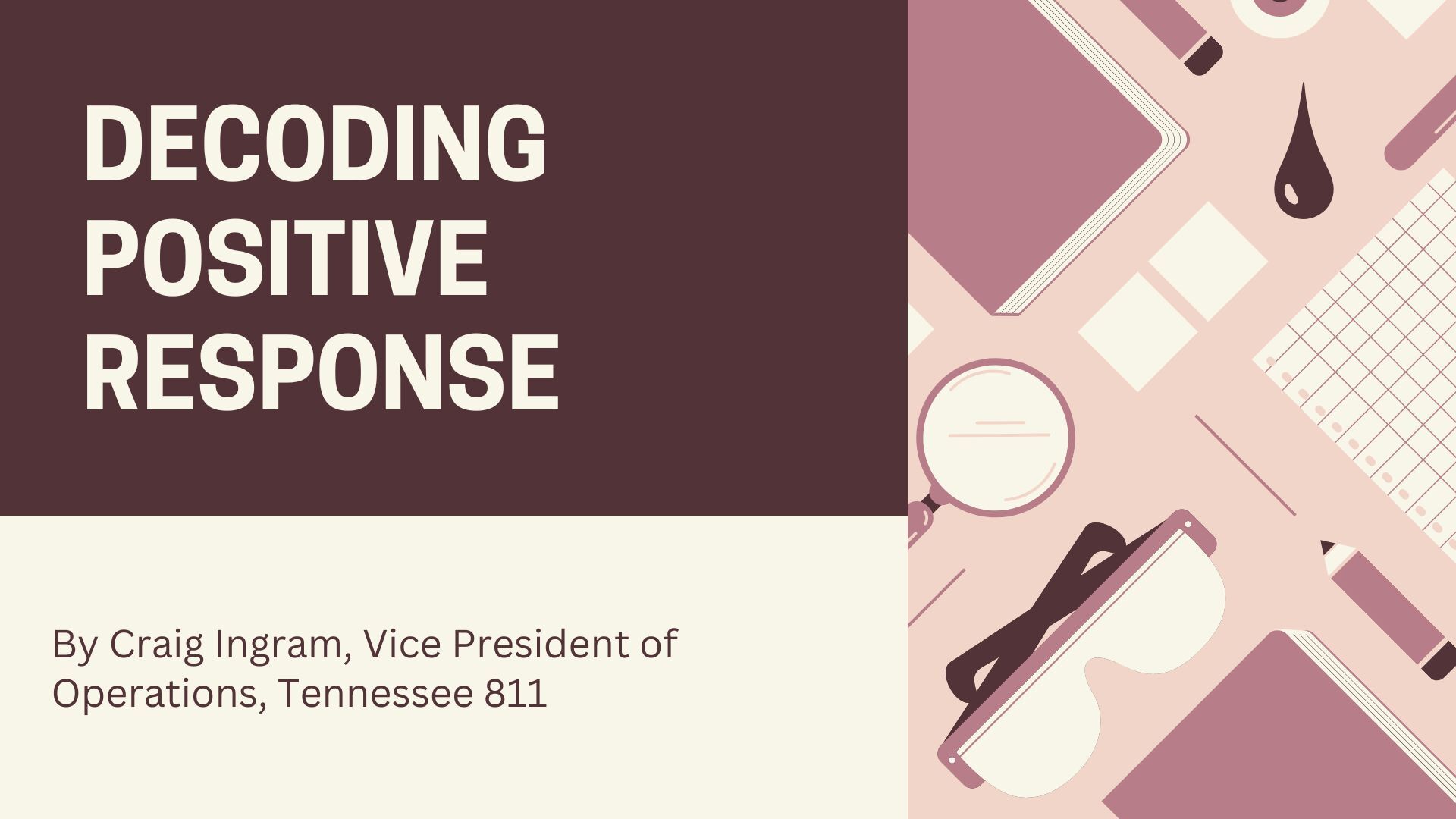
In Tennessee, utility operators are required to respond to all locate requests (including design tickets) using the web-based electronic positive response system. This gives the excavator (or requestor) a definitive answer to the status of their ticket and becomes part of the official record. So, positive response is a key element of communication between excavators and utility operators, and that means it has the power to improve the 811 process or to introduce confusion.
If you’re reading this and you’re not sure what I’m talking about, here’s the definition found in the Common Ground Alliance (CGA)’s Best Practices Guide:
“Positive Response: Communication with the excavator prior to excavation to ensure that all contacted (typically via the 811 centers) owner/operators have located their underground facilities and have appropriately marked any potential conflicts with the areas of planned excavation.”
A large number of response code options could mean that you can provide a more detailed response on how a specific job site was handled, but it could also lead to several codes with similarities, making it hard to distinguish the best use case for each. On the other hand, our current approach of only using nine codes may be insufficient to cover the variety of possibilities that exist in the real world. A limited number of responses may also be insufficient to communicate the action taken on design tickets or other specialized notice types.
Many states with electronic positive response also include a comments box that can be used to provide additional details that were not adequately communicated through the selected response code. In Tennessee, we find that the field is underutilized, and free-form fields are also difficult to pull analytics from.
We’re preparing to launch a task force that will formally evaluate the current options and begin the collaborative process of adding, removing, or rephrasing response codes to better facilitate communications between locators and excavators while also allowing for better data collection on the successes and failures of the 811 process. The end goal is for positive response to accommodate attachments (images, pdf files, etc.) and for it to become a two-way communication tool that allows excavators to respond.
In the meantime, here’s a list of our current response codes and a short explanation of the intended use for each one.
Code: 01 - No Response - No Timely Response From The Utility - System Closed Ticket
Intended Use: Posted automatically by the positive response platform when a utility does not respond to a ticket before it expires. Utilities are not able to post responses on expired tickets.
Code: 02 – Located - Facilities Marked
Intended Use: All underground lines for the specified member and facility type(s) have been located and marked in the area of excavation described on the ticket.
Code: 03 – Clear - No Conflict
Intended Use: The area of excavation is inside the specified member’s service area, but the member does not have underground lines in conflict with the scope of work on the ticket.
Code: 04 - In Conflict - Utility representative must be on site during excavation
Intended Use: All underground lines for the specified member and facility type(s) have been located and marked in the area of excavation described on the ticket. The marked lines are high profile or otherwise require additional protection, so the utility operator needs to be on site to supervise the work.
Code: 05 - Locate Delayed
Intended Use: Markings will not be completed on time due to circumstances beyond the control of the utility or their locator. Additional info explaining the delay and ETA for markings is included in the comments. Followed by a closing response as soon as possible.
Code: 06 - Cannot Locate - Contact Utility
Intended Use: The member utility has attempted to locate and mark the specified facility type(s) but is unable to because of access issues, damaged tracer, etc. Contact information is provided in the comments.
Code: 07 - Located to Meter Only - Private property beyond meter not located
Intended Use: All underground lines owned and maintained by the specified member have been located and marked in the area of excavation described on the ticket, but private lines extend beyond a meter or other point of service.
Code: 08 - Utility Generated Ticket - Self-Locate
Intended Use: The ticket was entered by the responding utility or by their 2nd party contractor. Any markings needed on the site will be coordinated internally with utility staff and/or their contractor.
Code: 09 - No Marking Needed - Digsite outside of utility service area or ticket has been cancelled
Intended Use: The area of excavation is outside the service area of the specified member utility. Typically occurs around the edge of a member’s database. More likely when a member’s database is based on grids rather than shape files.
